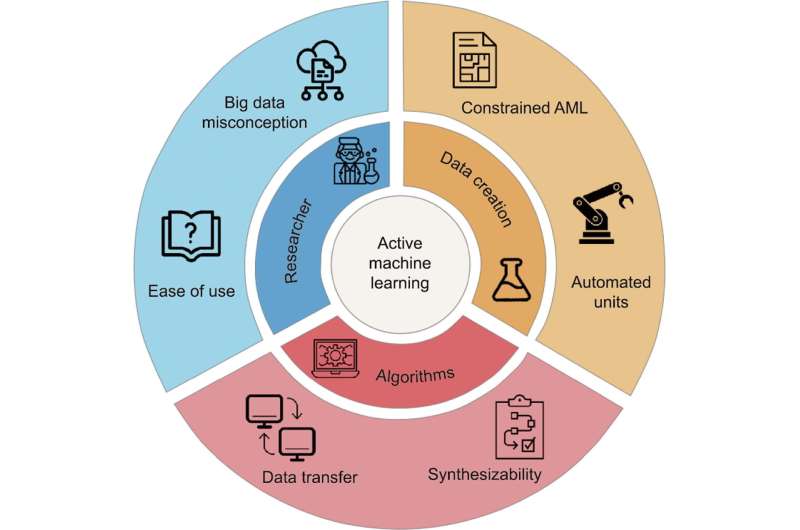This article has been reviewed according to Science X's editorial process and policies. Editors have highlighted the following attributes while ensuring the content's credibility:
fact-checked
proofread
Research team envisions a bright future with active machine learning in chemical engineering

Chemical engineering researchers have a powerful new tool at their disposal: active machine learning. In a recent perspective article published in Engineering, Kevin M. Van Geem's research team at Ghent University explores the potential of active machine learning in revolutionizing the field of chemical engineering. By combining machine learning with the design of experiments, active machine learning promises to enhance the efficiency and cost-effectiveness of research, spanning all length scales of chemical engineering.
Active machine learning algorithms offer greater flexibility and superior performance compared to traditional design of experiment algorithms. However, despite their potential, the applications of active machine learning in chemical engineering are still limited. The article identifies three key challenges hindering its widespread adoption: convincing experimental researchers, ensuring flexibility in data creation, and enhancing the robustness of active machine learning algorithms.
The survey conducted by Van Geem's team highlights the broad spectrum of active machine learning applications in chemical engineering. Nevertheless, the article emphasizes the need to popularize active machine learning among experimental researchers and overcome the existing barriers. To address these challenges, the article proposes collaborative efforts between machine learning experts and chemical engineers.
The collaboration would not only raise awareness about active machine learning but also facilitate the customization and optimization of algorithms based on specific experimental units and procedures.
Overcoming the barrier of suboptimal initial experimental selection, the integration of transfer learning and active learning with multi-fidelity models is suggested. Furthermore, the article emphasizes the importance of adapting general active machine learning algorithms to meet the constraints of different setups, thereby extending the application domain of active machine learning.
Active machine learning has the potential to revolutionize various aspects of chemical engineering research, from molecule and catalyst design to reaction and reactor design. However, to unlock its full potential, it is crucial to bridge the gap between machine learning experts and chemical engineers. By doing so, not only can active machine learning algorithms be fine-tuned, but also the performance of these algorithms can be improved.
The article concludes by highlighting the significance of harmonizing synthesizability and creativity in active machine learning. Promising breakthroughs in this field will enable chemical engineers to leverage active machine learning as an essential tool, facilitating autonomous and efficient scientific discoveries. Ultimately, this will contribute to a more sustainable chemical industry in the future.
Nan Zhang, editor of the subject of chemical, metallurgical, and materials engineering of Engineering, commented, "As active machine learning continues to mature, the future looks bright for chemical engineers. Increasing automation and the development of more efficient algorithms will pave the way for novel discoveries and advancements in the field. With better collaboration and wider adoption, active machine learning is poised to become a trusted asset in the chemical engineer's toolkit."
More information: Yannick Ureel et al, Active Machine Learning for Chemical Engineers: A Bright Future Lies Ahead!, Engineering (2023). DOI: 10.1016/j.eng.2023.02.019
Provided by Engineering




















